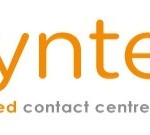 Contact Centre Real Time Reporting: Alex Cooksey of Syntec suggest ten simple ways in which real time reporting can help you ensure that your contact centre is working to maximum effectiveness.
Contact Centre Real Time Reporting: Alex Cooksey of Syntec suggest ten simple ways in which real time reporting can help you ensure that your contact centre is working to maximum effectiveness.
 Alex Cooksey – Syntec. Alex studied computer science at Southampton University before joining EccoWare. There he looked after quality assurance and customer services, working directly with proprietary derivatives traders (those who trade their own money) and learning first-hand how to deal with customers whose entire fortunes rest on whether your software works as promised. He then joined the Department for Transport as PA to the head of property, helping to divest the government of a large portion of what was then the second largest property empire in the country. Alex joined Syntec in 2005 and looks after customer services, helping to ensure that each Syntec customer comes across to their own customers as best they can.
Alex Cooksey – Syntec. Alex studied computer science at Southampton University before joining EccoWare. There he looked after quality assurance and customer services, working directly with proprietary derivatives traders (those who trade their own money) and learning first-hand how to deal with customers whose entire fortunes rest on whether your software works as promised. He then joined the Department for Transport as PA to the head of property, helping to divest the government of a large portion of what was then the second largest property empire in the country. Alex joined Syntec in 2005 and looks after customer services, helping to ensure that each Syntec customer comes across to their own customers as best they can.
For additional information see the Syntec Website or view their Company Profile




